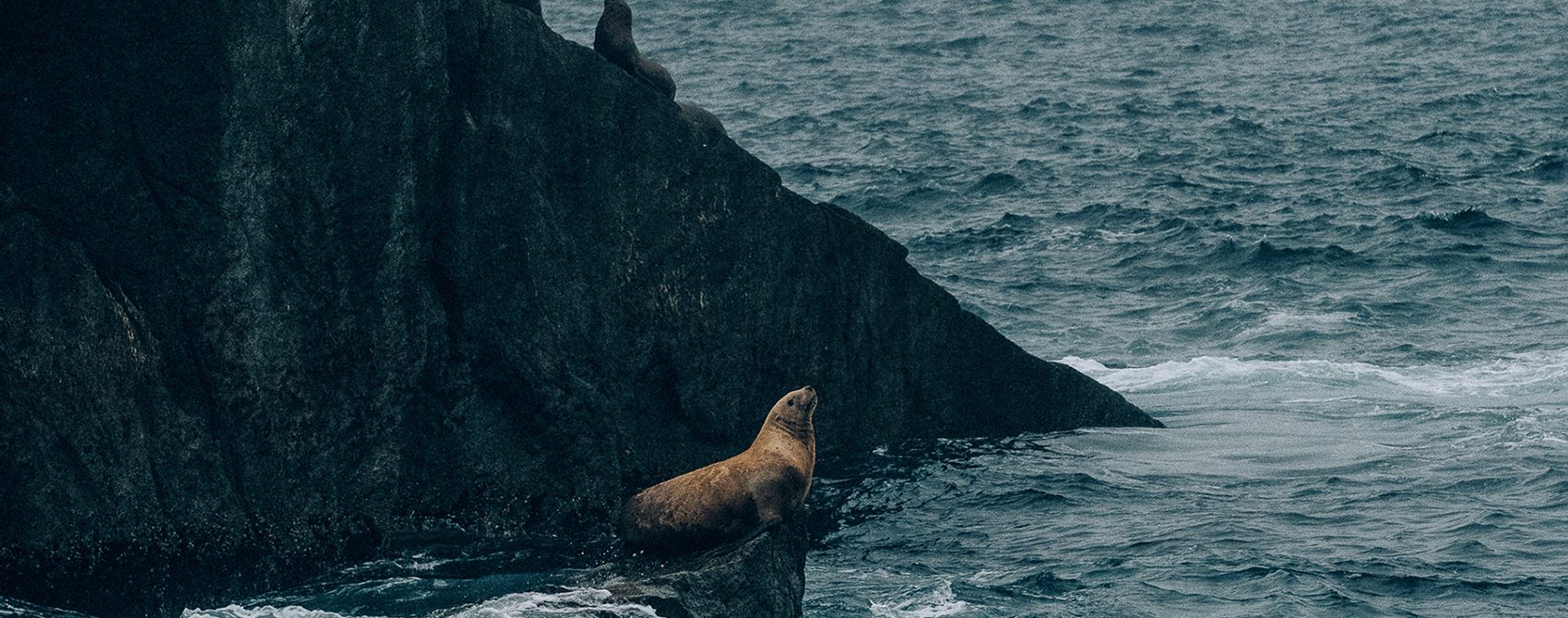
Alaska Diaries: Global Summer
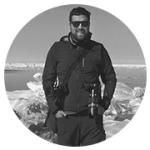
Born in Russia, lives in Portugal. Specializes in documentary photography, works for Panos Pictures. Works with the UN, Amnesty International, Oxfam, ChildFund, and UNICEF. Sokhin’s photographs have been published in The Guardian, National Geographic, GEO, International Herald Tribune, The Atlantic, The Global Mail, Internazionale, Stern, Le Monde, Paris Match, Marie Claire, BBC, Sydney Morning Herald, and in “The Russian Reporter” and “Around the World.” Published a photobook called Crying Meri about violence against women in Papua New Guinea.
I spent the final days of my trip around Alaska visiting the glaciers located in the Kenai Fjords National Park and in Prince William Sound. You get to them on ships, each voyage taking six to ten hours. I was hoping to take photographs of the melting glaciers, as well as animals living in the area, who are already impacted by global warming, or may be impacted in the nearest future.
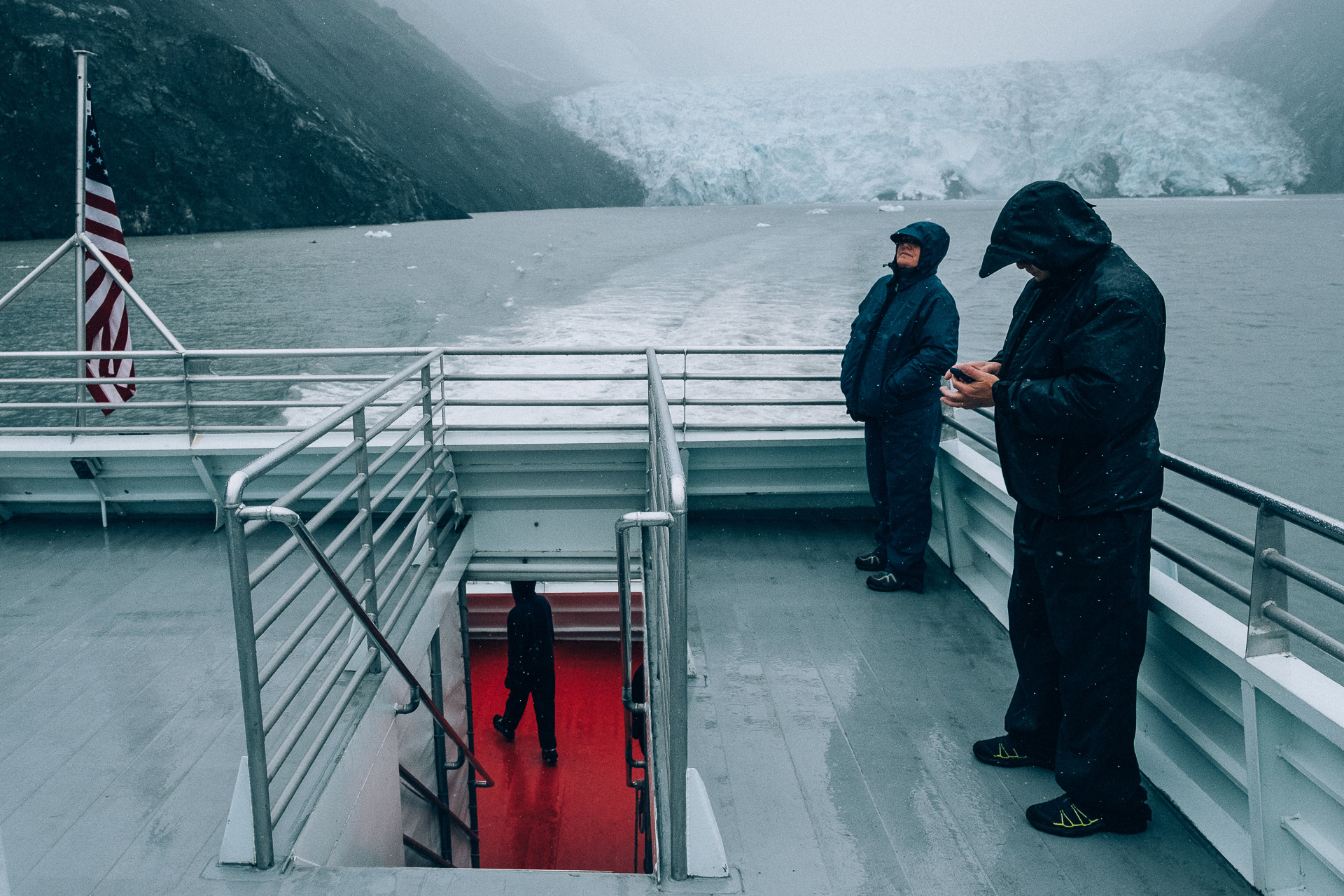
To get to the fjords and glaciers, I had to go back to Anchorage. Almost every time when I was traveling between villages, I had to go back to Anchorage airport to board my next flight. I often took photographs from the plane window, especially when we were flying above mountain ranges or flying low above the water.
However, I was most impressed by the summer tundra landscapes with its numerous lakes, rivers, streams, and other small bodies of water, formed due to the annual melting of snow. This year anomalous heat started to change how the tundra looks. The locals say that many bodies of water have dried very fast, which almost never happened before, and many times I noticed brown spots around the drying lakes. This year the heat broke all records, making summer 2016 the hottest in Alaska in the entire history of the observations of its weather.
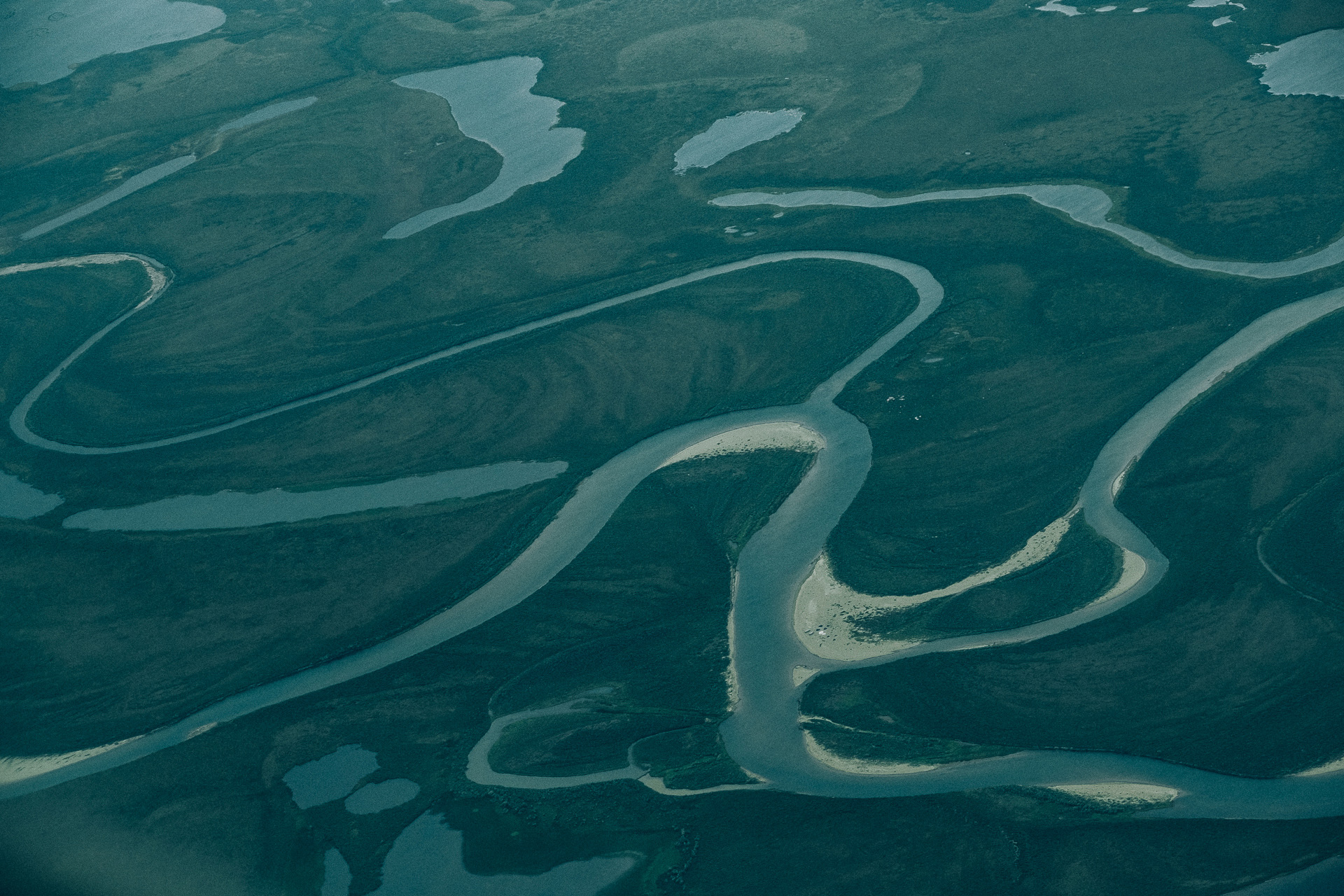
I left Anchorage for Seward, which was the starting point for my trip around the fjord reserve. On the way, I stopped for several hours at the Alaska Wildlife Conservation Center where I could see many animals. Bears, moose, caribou, and musk oxen all live there in large open air areas. Some of them were placed there to save them from starvation, like it happened to one grizzly bear, Hugo. The hunters found her near Kotzebue in 2000. She was emaciated and dehydrated, and her paws were hurt by porcupine needles. After the bear was delivered to the Wildlife Conservation Center and she fully recovered, they decided to keep her at the Center — she lost the skills necessary to survive in the wild.
I wrote earlier that global warming influences the populations of animals in the arctic region. When I worked in Barrow, I heard about ‘pizzly’, hybrid bears, who are born from mating between polar bears and grizzlies. This is where the name comes from. Polar and grizzly bears didn’t use to interact much in the wild, but because of the increase of temperature and the melting of the arctic ice, polar bears are migrating to the continent and further south while looking for food. At the same time, anomalous heat allows grizzlies to move into more northern areas of Alaska and Canada, where they meet their polar relatives. Not infrequently this results in the birth of hybrids. Their bodies are smaller than that of polar bears, but bigger than that of grizzlies. They have the light-brown fur and neck and paws of the polar bears. But the most interesting thing is that pizzly bears are able to reproduce, which is not typical for hybrids. Another characteristic is that they don’t hibernate, just like the polar bears.
Bears who don’t sleep in winter living in the southern territories may disrupt the balance in the animal world in the territories to the south of the Arctic Circle. So far, pizzly bears have been rare, stuffed pizzly can be found only in several museums in Canada and the US. But if the climate continues to get warmer, such hybrids will become more frequent.
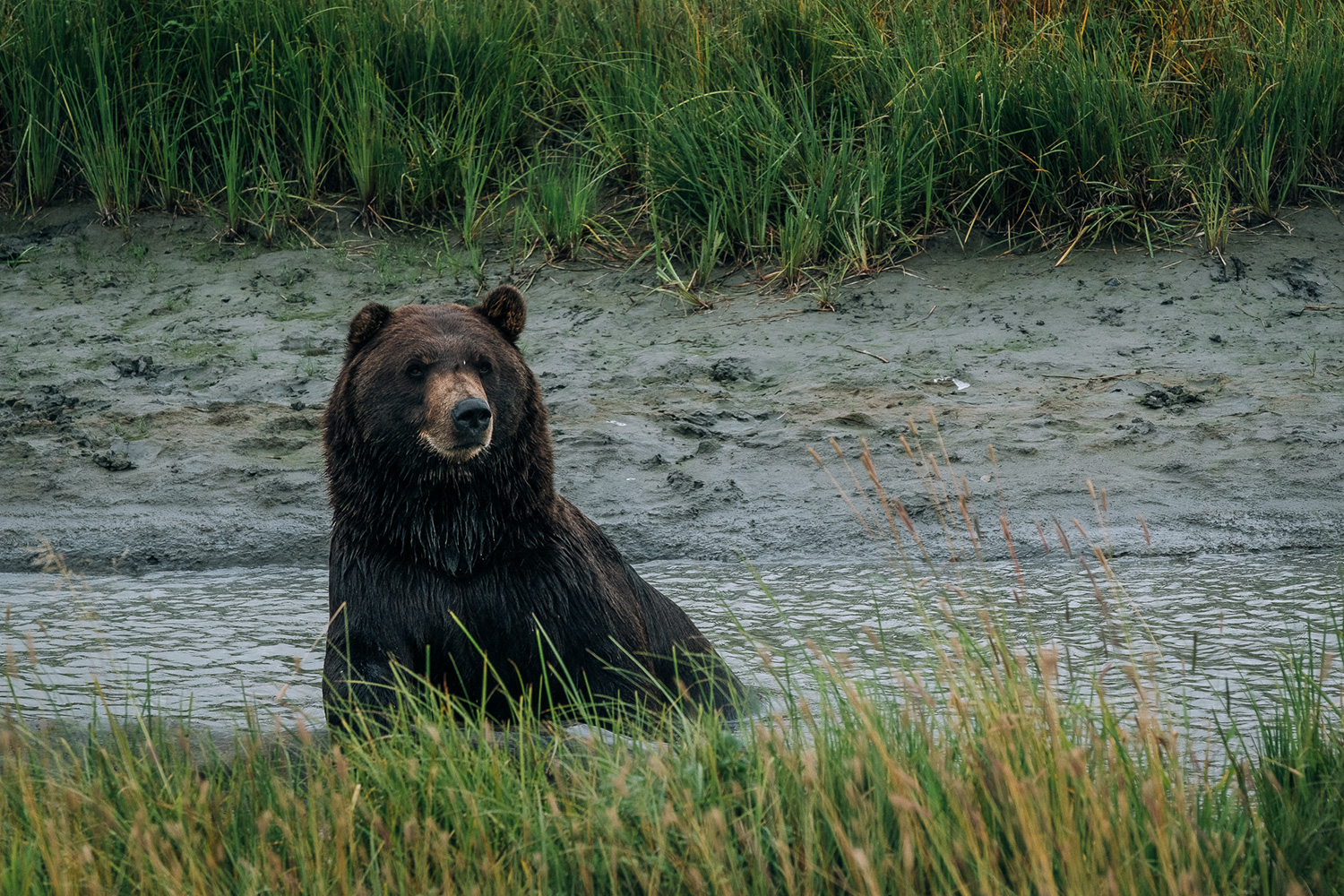
In Seward, I boarded a ship heading to Kenai Fjords reserve. We had to swim about 150 nautical miles in 9.5 hours. The ship stopped several times, so that the passengers could see the whales breathing out fountains of water.
Alaska scientists have been raising the alarm for the past several years. The increase of the temperature of the Pacific waters, caused by the warm phase of El Niño Southern Oscillation, starts impacting the sea creatures. The El Niño effect usually lasts for no more than two or three years and impacts only the equatorial waters. However, the phase that started in 2014 is still ongoing and there are no signs of subsiding; it has already been dubbed Super El Niño and it has been impacting much wider areas than the usual tropics. One of the possible reasons of lengthy El Niño is anthropogenic climate change. If the water temperature increases by one degree, this alone can cause the disruption of the ecosystem.
We are observing more serious changes now. Warm waters impact the increase of strength of tropical cyclones, discoloration and the death of coral reefs, forced migration of the sea animals and fish into colder waters. The El Niño of 2014–2016 has already led to two cyclones of the fifth, highest category, which damaged large areas of such countries as Vanuatu and Tuvalu (March 2015) and Fiji (February 2016). This year, 93% of all corals of the Australian Great Barrier Reef were discolored, many of them died.
The melting of glaciers near the shores of Alaska led to the mass migration of walruses and sea lions to the shore. Animals who usually live and procreate on ice had to seek shelter on the shore — the ice was either too thin to bear them, or absent.
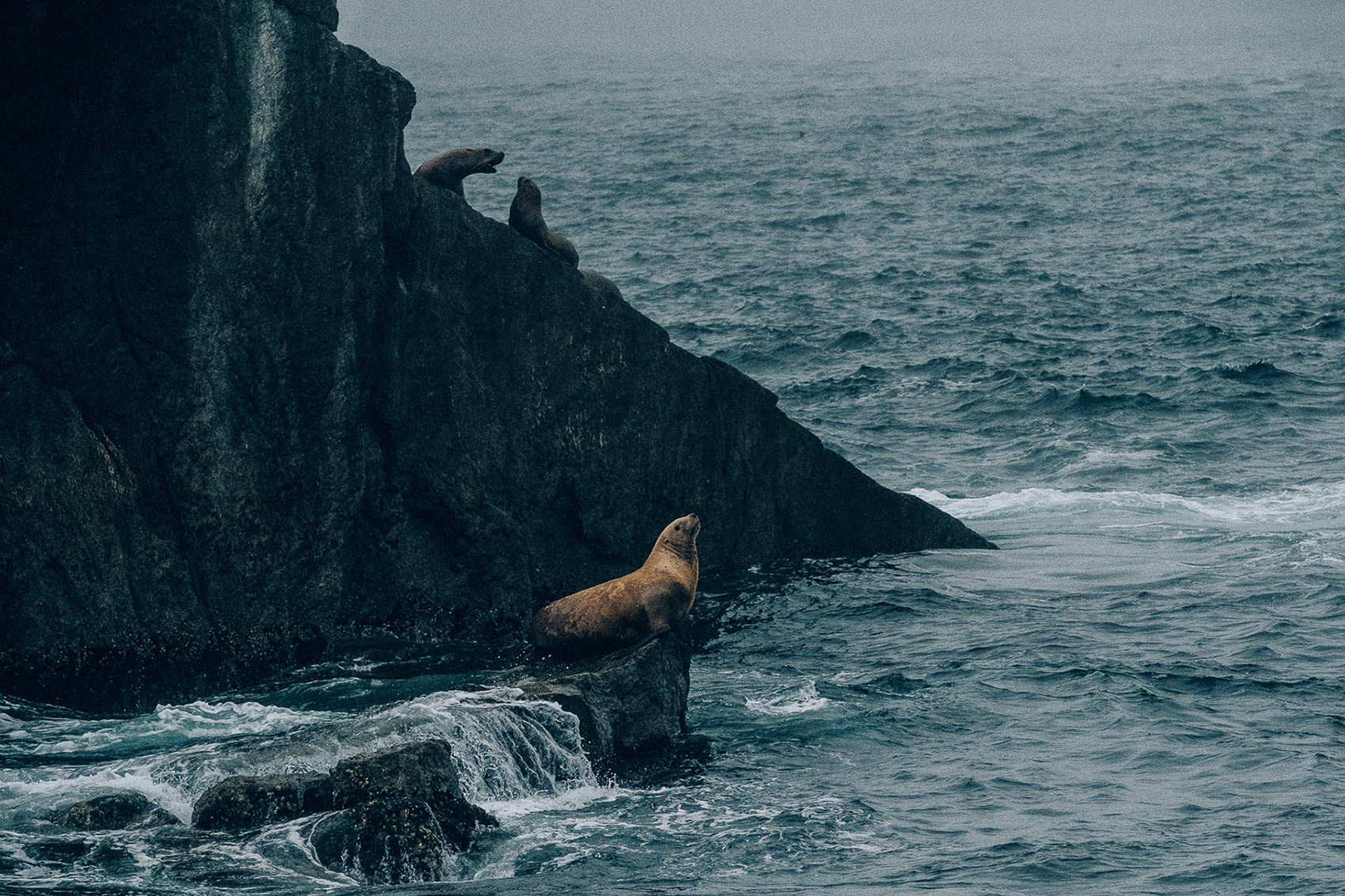
When we neared the Northwestern Glacier, we started noticing small chunks of ice floating in the water near the fjord. Near the foot of the glacier, the chunks were larger, with seals sitting on some of them and gazing at the ship. Some were lying on chunks of floating ice that were barely bigger than the animals themselves.
Watching the animals and nature is hypnotizing, and sometimes you don’t even want to press shutter release. Since I started my project about global warming, I have visited many areas in the Pacific region. And the more I am in nature, the less I want to observe it through the viewfinder. Sometimes, I deliberately leave the camera behind, so that I wouldn’t be tempted to capture ‘everything I see’.
This time I took only several photographs — I mostly watched and listened. When the captain cut the engine and we found ourselves in silence, rarely disturbed by the cries of seagulls, all the passengers on the ship went silent and observed the magnificent mount of the glacier, as if hypnotized by it. And then suddenly the deafening roar of the mass of ice falling into the water disturbs the peace, and everybody grabs their cameras and smartphones and start taking pictures.
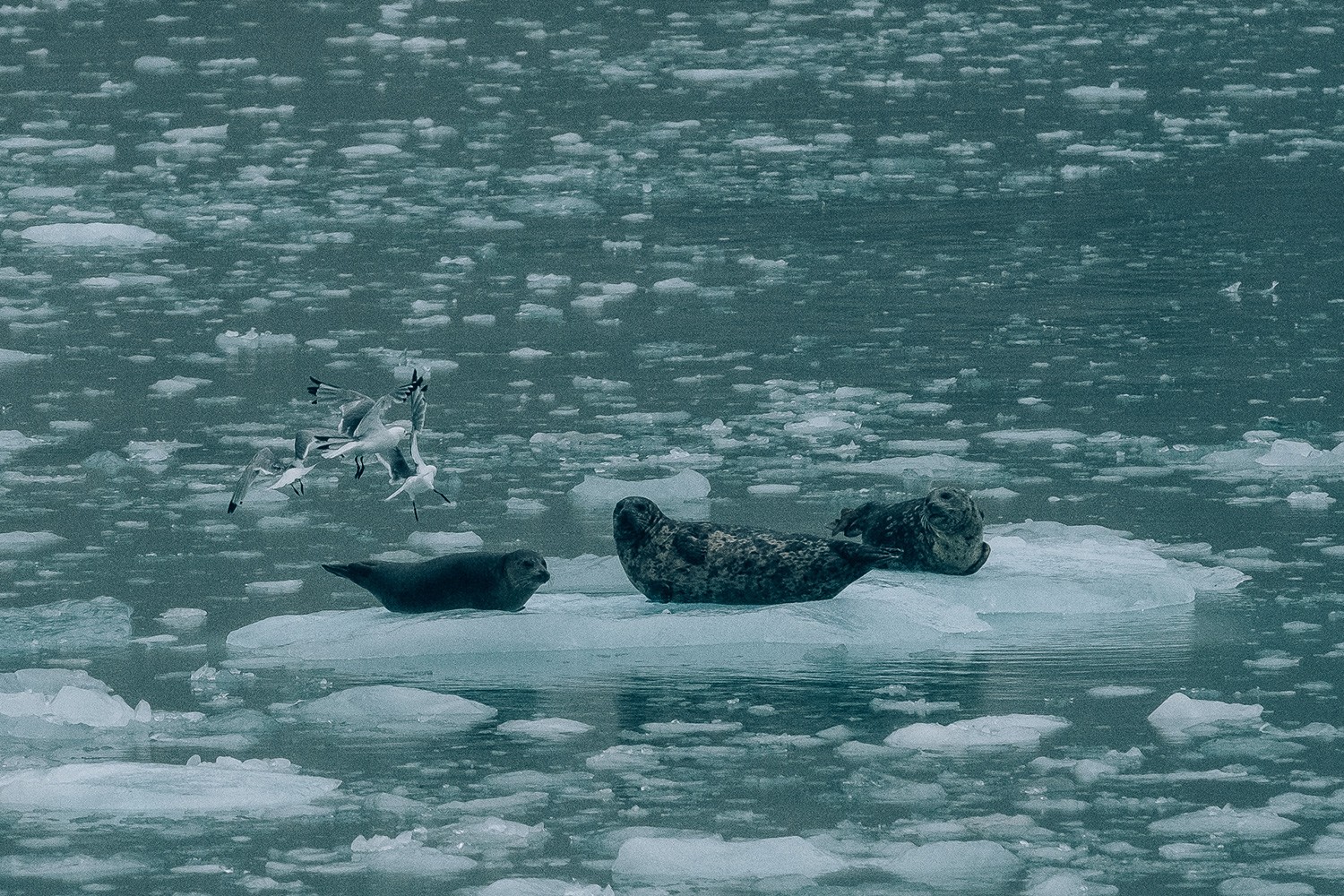
The impression a mass of ice makes when it falls into the water is hard to describe. After several minutes, the roar is gone, and there is silence again. And then a huge chunk breaks off somewhere else, and we all shudder from the roar ice makes when it falls into seawater.
In recent years, the glaciers have been melting very fast. The North Pole, Antarctica, Greenland, the Himalayas, the northern territories of Canada, Russia, the US, and other countries have been losing their ice sheets very quickly. Over 500 billion tons of ice on the land have been melting annually. According to the satellite data, glaciers all over the world have lost about five trillion tons of ice since 2002. NASA scientists have been raising the alarm and predicting the complete disappearance of the ice cover in the Arctic Ocean in the nearest decades. Even now the people who live in northern towns such as Barrow are afraid that the melting of the Arctic ice will have a negative impact not only on the animal world, but on the entire ecology of the region.
Currently, only Russian icebreakers can pass the North-Western sea route, but last year two German cargo ships went past Barrow. This raised concern among the locals: if there are many ships in the Arctic Ocean, the state of the environment in the region will be much worse, and such traditions as whale hunting may just go extinct.
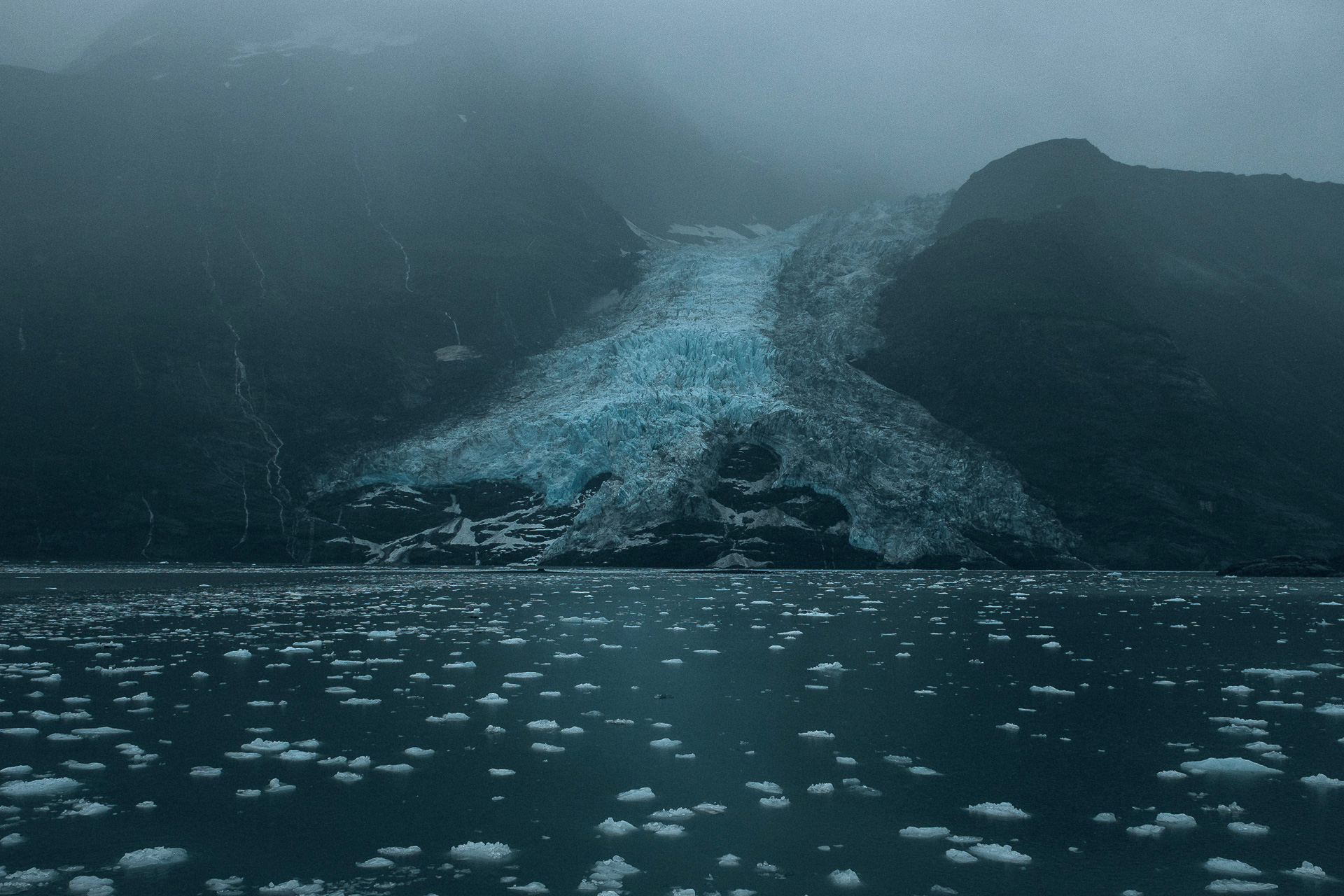
In two days of traveling in the Kenai Fjords and Prince William Sound, we visited about 20 glaciers. The monitors inside the ships constantly showed the map with our location. One time, when we were close to one of the glaciers, I glanced at the monitor and saw that we were right inside the glacier. The captain explained that the navigation maps that they are using are going out of date — the glaciers are melting too fast:
— We see small rocks sticking out of the water, in 2003 they were under the ice. Several years ago, there was ice in the place of the fjord where we anchored. Now it is water, but the maps are showing that we are on a glacier.
Columbia, another glacier in the Prince William Sound, is more than 19 kilometers away from its location in 1980, and 450 meters lower. The captain showed us photographs of the glaciers taken in the early 20th century and the photographs of the same locations made in the 21st. In many images we could see the striking difference. The rocks that were fully covered with ice are now standing almost bare, with ice lying only on the peaks.
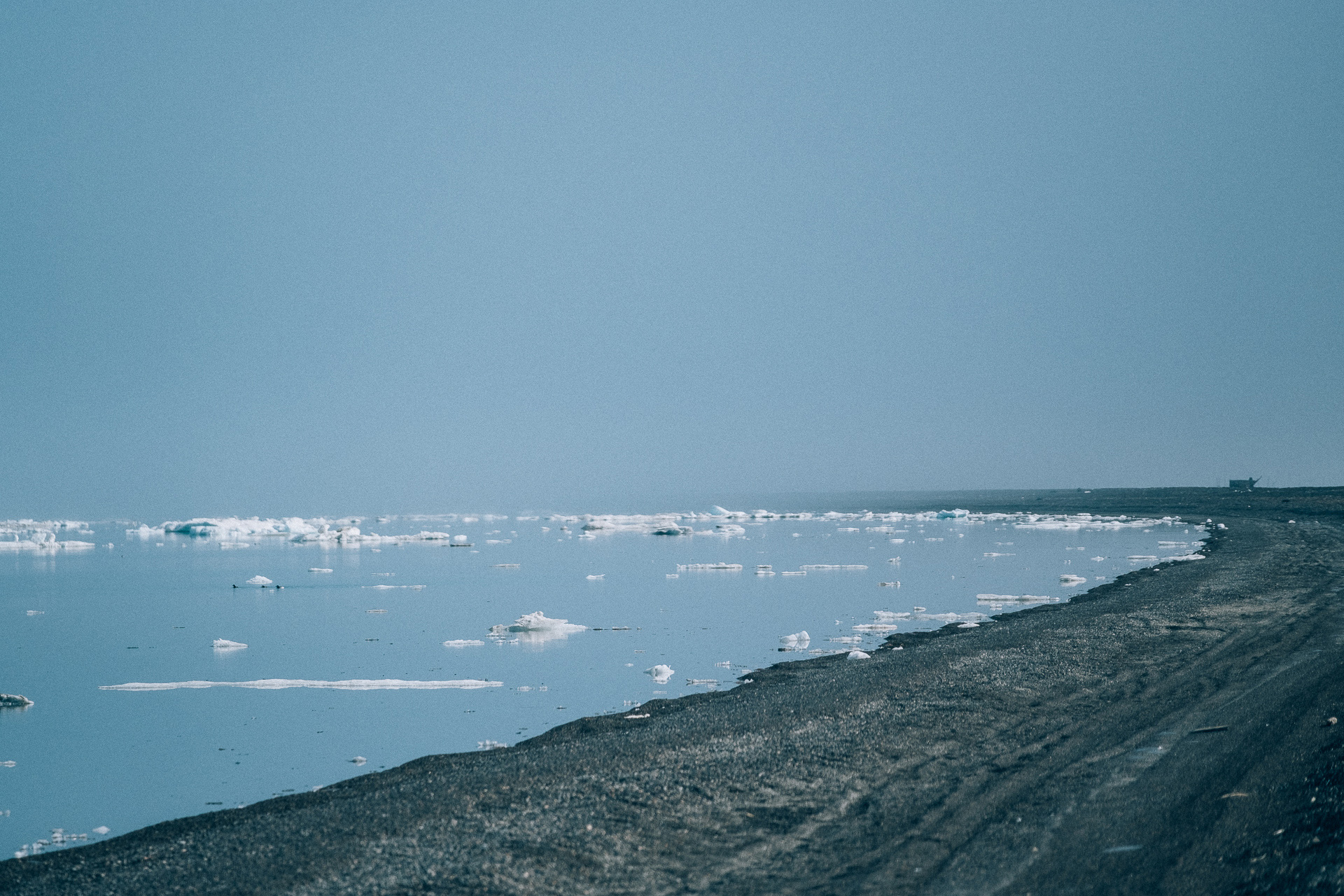
Traveling around Kenai Fjords National Park, we often saw sea otters sticking out of the water. Many were lying on their backs, but when they saw people, they quickly went under water. The mass extinction of the sea otter has been happening since 2015. Scientists and volunteers have recorded several deaths a day. According to the latest research, they die because of the lack of food, mostly fish. Warm water speeds up the metabolism of fish, their bodies become smaller, many fall ill and also die in large numbers.
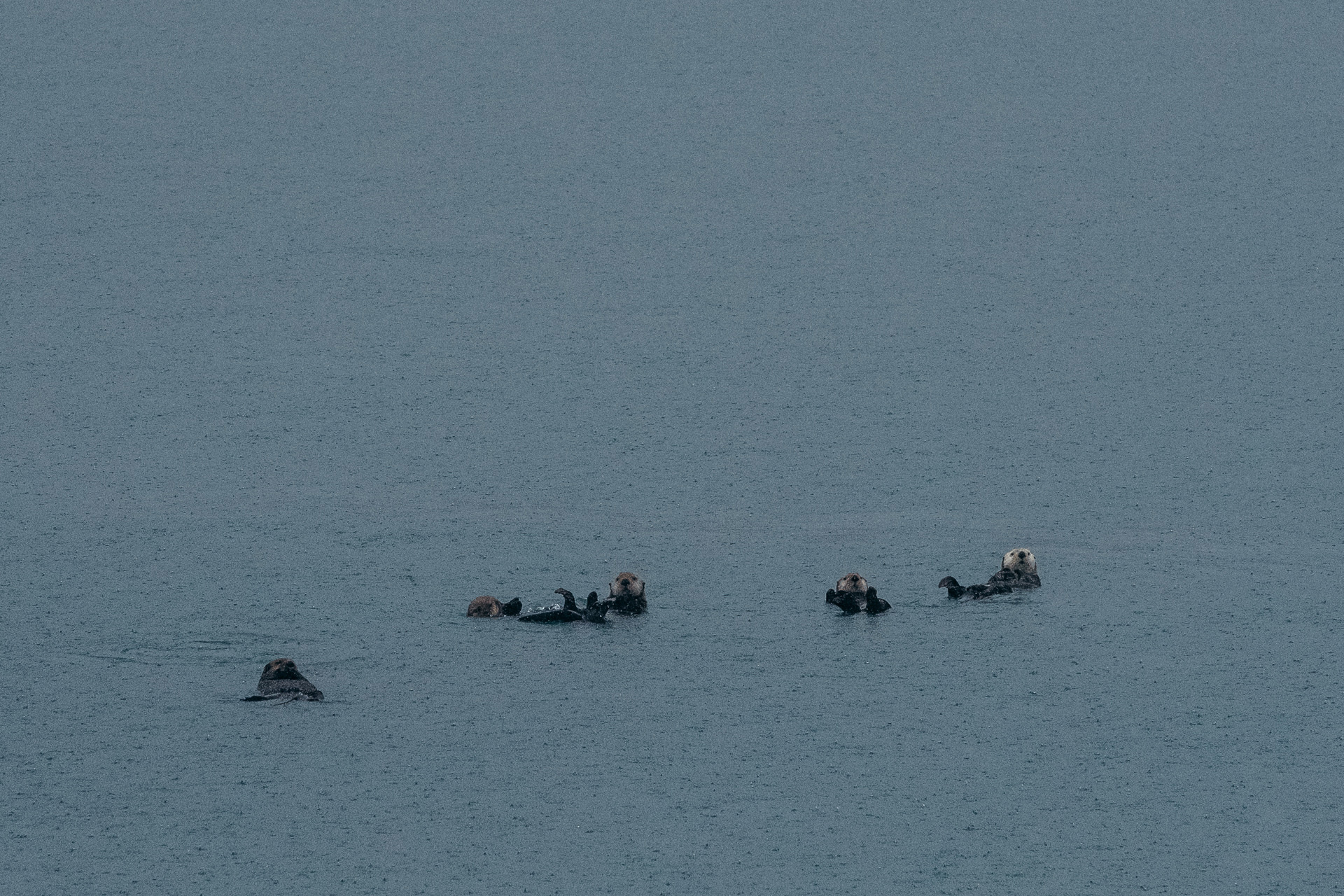
I started documenting climate change in 2013, from the illegal tree cutting in Papua New Guinea and the impact it has on the local ecosystem and climate. I never thought that the assignment from The Global Mail Australia would turn into a large years-long project. Three years ago I could not imagine how serious the impact of global warming already is right now. In these years, I read hundreds of articles and dozens of books about it and saw with my own eyes how quickly our planet is changing.
My journey around Alaska ends in Anchorage airport six weeks after I first stepped on the land of the 49th American state. I am leaving for Kamchatka, where I will continue my work. Nearer the end of this year, I will try to travel to Fiji again, to study the stories of climate refugees; I will try scuba diving near the Australian Great Barrier Reef; I will go to New Zealand to work in towns and villages that are gradually being destroyed because of the rising sea levels and coastal erosion. If I am lucky, I will try to make it to Antarctica, where I am planning to complete this project.
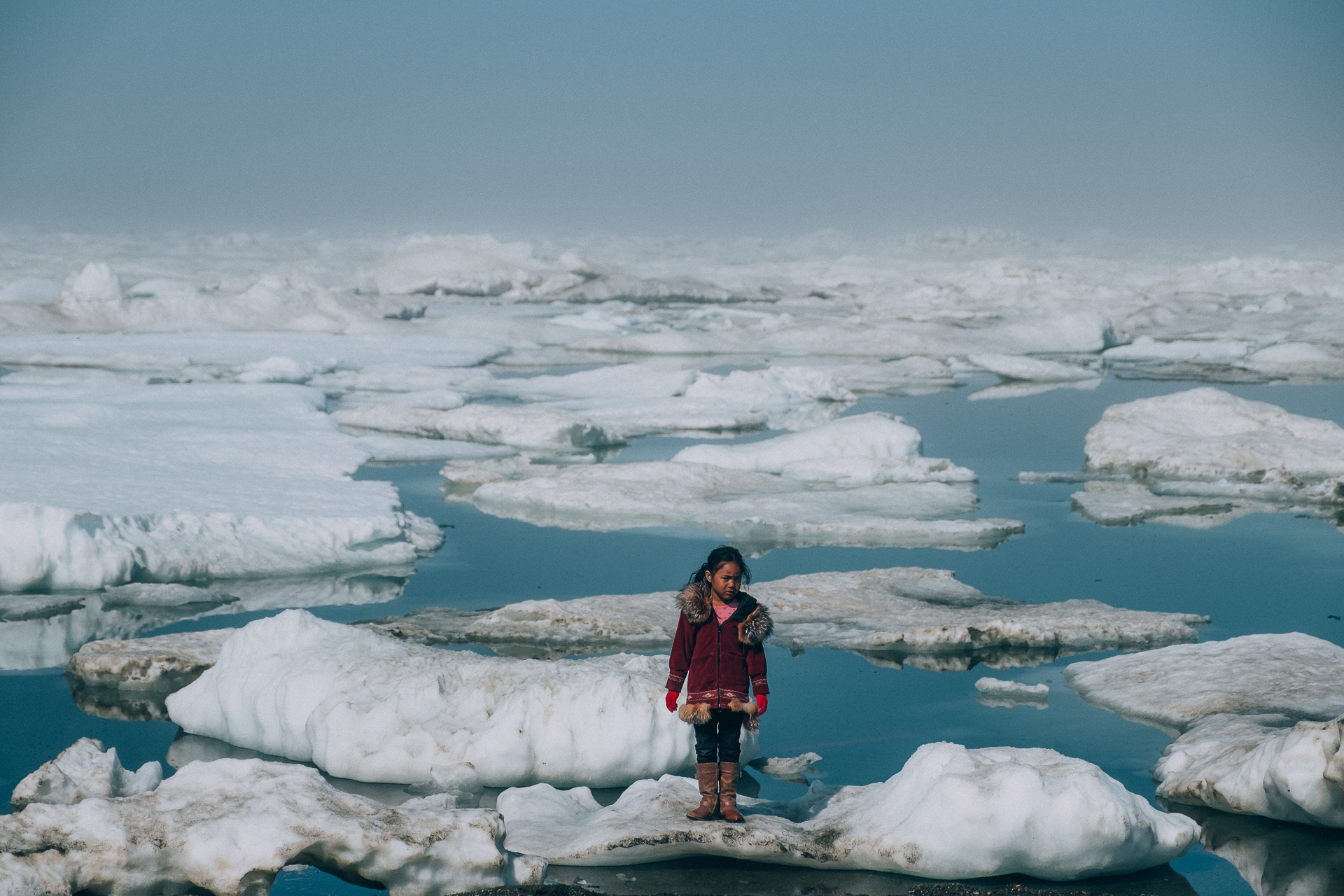
Text and photos: Vlad Sokhin / Panos Pictures






